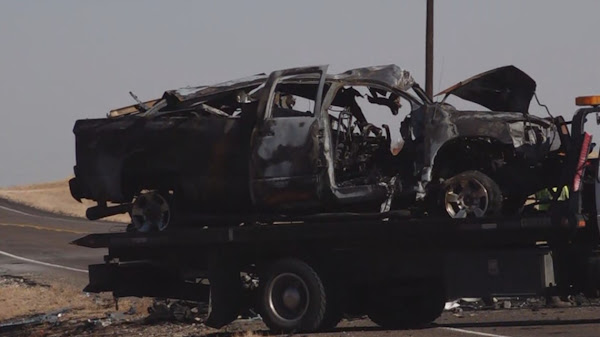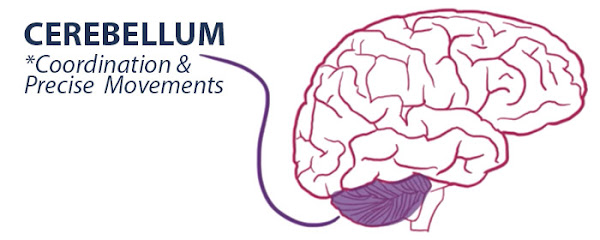Cerebral Palsy is a congenital disorder of movement, muscle tone, or posture. Cerebral palsy is due to abnormal brain development, often before birth. CP is the most common motor disability in childhood.
Cerebral means having to do with the brain. Palsy means weakness or problems with using the muscles. Cerebral palsy is a group of physical disorders that permanently affect:
- Posture
- Balance
- Movement
- Ability to control movement
- Communication
- Eating
- Sleeping
- Learning
What Causes Cerebral Palsy?
The causes of cerebral palsy can be more difficult to grasp if medical errors are involved. Cerebral palsy can be caused by doctors or nurses failing to respond to fetal distress, failing to perform a timely C-section or other errors during the labor and delivery process or care shortly after birth of a child. These errors can constitute medical malpractice.
Symptoms Of Cerebral Palsy
The symptoms of cerebral palsy are primarily physical. However, injuries to an infant’s brain, including hypoxic-ischemic encephalopathy (HIE), are the primary cause of CP. Cerebral actually means brain, while palsy means muscle weakness.Symptoms vary widely among children with cerebral palsy. Some signs may show up soon after delivery, while milder cases may not be diagnosed until later, usually by two to five years of age.
The two general classifications of symptoms are:
- Decreased muscle tone (Hypotonia) – Infants with hypotonia may seem floppy. Brain damage can cause hypotonia
- Increased muscle tone (Hypertonia) – Muscles become stiff and challenging to move. Hypertonia also can be caused by brain damage
Between ages 6 months and 12 months, an infant with cerebral palsy might exhibit the following symptoms:
- Missing physical development milestones
- Unable to roll over
- Difficulty moving hands
- Keeping one hand fisted while reaching with the other
- Lopsided crawling
- Not crawling on all fours
Adults with cerebral palsy might exhibit additional symptoms, including:
- Lack of muscle coordination
- Difficult performing precise movements
- Difficulty walking
- Stiff muscles
- Exaggerated reflexes
- Shaking, twitching, or other involuntary movements
- Drooling or having trouble swallowing
- Difficulty speaking
Types Of Cerebral Palsy
Cerebral palsy is a complex disorder where brain damage causes physical disabilities. The wide range of symptoms and degrees of severity complicate diagnosis and treatment, as well as perception.
Within the cerebral palsy diagnosis, there are four basic types of CP:
- Spastic cerebral palsy
- Ataxic cerebral palsy
- Dyskinetic cerebral palsy
- Mixed cerebral palsy
Spastic cerebral palsy is the most common type of cerebral palsy. In fact, roughly 80% of people with CP are diagnosed with a form of spastic CP. People with spastic cerebral palsy exhibit uncontrollable, involuntary limb movements and tight muscles that inhibit movements, causing bone and joint deformities.
- Diplegia or Diparesis: This type of CP indicates that an individual has severe muscle stiffness, particularly in their legs. Their arms might be affected very little or not at all.
- Hemiplegia or Hemiparesis: Here, disability affects only one side of an individual’s body. Typically, this type of CP affects a person’s arms more than their legs.
- Quadriplegia or Quadriparesis: This is the most severe form of spastic cerebral palsy because it affects a person’s arms, legs, trunk, and face. Also, people with this form of CP usually have intellectual disabilities and suffer from seizures and speech, hearing, and vision problems.
Dyskinetic cerebral palsy is the second most common form of cerebral palsy. Research indicates dyskinetic cerebral palsy is caused by “non-progressive lesions to the basal ganglia or thalamus or both.” Frequently, birth trauma due to medical errors during labor and delivery or immediately following birth (called “neonatal negligence”) causes these injuries.
Since dyskinetic cerebral palsy may affect the face and tongue, it may be difficult to talk, suck, and swallow. However, the muscle tone of children with dyskinetic CP often varies from day to day and even from hour to hour. Doctors recognize three forms of dyskinetic CP based on an individual’s symptoms:
- Dystonic: Dystonic symptoms include twisting, repetitive movements that are more prominent when a child is tired or emotional. For some children, pain levels increase with increased movement. These symptoms affect activities of daily life, quality of life, and participation in social activities.
- Athetoid: Characterized by slow, writhing movements, athetoid’s primary symptoms include abnormal posture, impaired coordination, and minimal control over movement. A child with athetoid symptoms might be unable to maintain posture. Other limitations include trouble with standing, sitting, and hand movements. Athetoid dyskinetic cerebral palsy can be caused by bilirubin encephalopathy or hypoxic-ischemic encephalopathy (HIE).
- Choreoathetosis: Someone with chorea symptoms will have movements that are clumsy, abrupt, and unpredictable. Wild, violent movements are possible with more severe forms of choreoathetosis cerebral palsy. Chorea can interfere with movements, speech, and swallowing.
Dystonia and choreoathetosis are often found together.
Ataxic Cerebral Palsy refers to issues with balance and coordination. Children with this form of CP might appear unsteady and shaky. Their movements might seem disorganized and jerky to other people.
It’s believed that ataxic cerebral palsy is the result of damage to the cerebellum. This part of the brain is responsible for controlling movement and plays a part in “cognition, emotional processing, and social behavior.”
Mixed cerebral palsy is the diagnosis when children have a combination of cerebral palsy symptoms. Typically, this means that brain injury has occurred in several parts of the brain. Currently, spastic-dyskinetic CP is the most common type of mixed cerebral palsy.
Cerebral Palsy Treatments
There’s no cure for cerebral palsy. But that doesn’t mean there’s no way to alleviate symptoms and improve abilities. In fact, treatments and therapies that are currently available can help someone with cerebral palsy live as fully as possible.
Typical goals for a child with CP include:
- Preventing or reducing physical symptoms
- Preventing or reducing physical symptoms
- Improving the child’s mobility
- Optimizing the child’s overall health
- Maximizing success and independence
Treatment plans for people with cerebral palsy may include medications, surgeries, and therapies. Also, medical equipment and assistive technology often play an essential part in the daily life of a child with CP.
Cerebral Palsy Medications
Medical professionals might administer medications orally, in IVs, or through muscle injections. The drugs prescribed for people with cerebral palsy fall into the following categories:
- Anti-spasmodic: These drugs help reduce muscle spasms, spasticity, and tight muscles. Examples: Baclofen, benzodiazepines like diazepam, lorazepam. Dantrolene sodium (Dantrium and Revonto). Diazepam (Valium). Tizanidine or Flexeril (muscle spasms). Botulinum toxin (injected). Intrathecal baclofen (implantable pump)
- Anticonvulsant: Medical professionals sometimes prescribe anticonvulsants for children who experience seizures. Examples of anticonvulsants medications include Clonazepam/Klonopin (benzodiazepines), Dilantin (phenytoin), Tegretol (carba-mazepine)
- Anticholinergic: Doctors sometimes prescribe anticholinergics to patients with involuntary muscle movements and excessive drooling. Examples are benztropine mesylate, Robinul, and Sinemet
- Anti-inflammatory: These medications might be administered for pain relief. Reducing inflammation also helps control the chronic pain that people with CP often face. Examples: Nonsteroidal anti-inflammatory drugs, steroids
Doctors also often prescribe anti-depressants for people suffering from depression. In addition, recent studies indicate that medications containing cannabidiol (CBD) may have a positive effect on children with cerebral palsy. However, research is ongoing.
Cerebral Palsy Surgeries
Sometimes surgery is the best option to treat a child’s cerebral palsy symptoms, particularly those associated with motor skill deficits.
- Selective dorsal rhizotomy: Pediatric orthopedic surgeons use this surgery to “improve communication between the spine and muscle.” This surgery can help decrease muscle tone and stiffness problems
- Intrathecal baclofen pump: Baclofen is used to treat muscle spasms, which is a common symptom of cerebral palsy. Some patients benefit from having an intrathecal baclofen pump surgically inserted into their abdominal wall. The pump then sends baclofen directly to the patient’s spine
- Orthopedic surgeries: Some children and adults with cerebral palsy benefit from surgery used to ease tight muscles and correct problems with bones and joints
- Surgeries to Address Other Conditions: Cochlear implants can improve or restore a patient’s hearing. Many people with cerebral palsy suffer from gastrointestinal problems that can be eased with surgery. Finally, nasogastric tubes and gastronomy tubes help when feeding issues arise
Cerebral Palsy Therapies
Therapies like the following can help people with cerebral palsy improve and retain capabilities.

- Physical Therapy: Typically, children learn how to sit, walk, and use orthotics with the help of a physical therapist. Other benefits include stretching muscles, improving mobility, and preventing or reducing muscle contractures
- Occupational Therapy: This type of therapy teaches children how to handle activities of daily living. For example, children may learn how to get dressed, bathe, and eat. Therapists help the children make the most of their abilities, which can improve the child’s self-confidence. Occupational therapists tend to focus more on fine motor skills and hand-eye coordination
- Speech and Language Therapy: Many people with cerebral palsy experience speech and communication issues. This type of therapy helps people improve their ability to speak and addresses muscle control problems with the tongue and mouth. Some children learn new ways to communicate, like sign language or computer software
- Recreational Therapy: Engaging in recreational activities can help a child with cerebral palsy improve their physical and intellectual skills. Also, parents often see improvement in self-esteem and emotional well-being
- Alternative Therapies: Children may also benefit from other, complementary forms of therapy, including:
• Hippotherapy: Riding and interacting with specially-trained horses sometimes improves a child’s balance, especially children with pelvic bone disorders. This therapy also helps with other activities involving balance and postural alignment, including walking, jumping, and using stairs
• Hyperbaric oxygen therapy (HBOT): This therapy exposes children to pressurized air or oxygen while in a special chamber. With higher air pressure, lungs can take in extra oxygen that is then used throughout the body to promote healing. HBOT is often used for people with traumatic brain injuries.
The parents of children with cerebral palsy often want answers. They want to know what happened to harm their child’s brain. Was it preventable?
Birth Injury Cerebral Palsy Attorneys
Our dedicated birth injury lawyers want to help you find those answers. We diligently investigate the facts and hold responsible parties accountable by pursuing medical malpractice claims against them. The compensation our clients receive helps them pay for their child’s current and future medical treatment, assistive technology and equipment, and the other expenses associated with caring for a child with cerebral palsy.
At Miller Weisbrod, a team of committed professionals use our detailed case review process to assess your potential claim. They start by learning more about you and your child. Then we gather medical records to determine what happened before, during, and after your delivery. We call in skilled medical experts who review your records and let us know if they think medical errors could have caused your child’s injuries.
The medical review of your case and the consultation are free. We only receive payment when you do when, and only when, a money settlement is reached for your child.
If your family has been affected by a birth injury such as cerebral palsy caused by a doctor's mistake or delivery room negligence, we invite you to contact our firm to discuss your case in a free initial consultation.
Our birth injury attorneys have the proven record, experience, and resources to help you achieve the compensation you deserve. Contact our offices today at (888) 987-0005 for your initial free consultation. You may also complete the form on this page to contact our support team.













